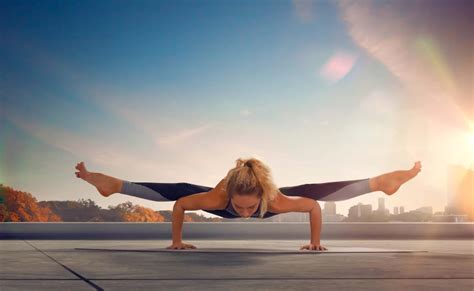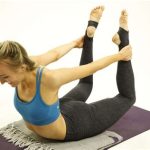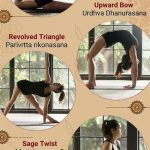Mastering Advanced Yoga: Pushing Beyond Your Limits
Yoga, often perceived as a practice of calm and balance, can also be an intense journey of physical, mental, and spiritual exploration. As practitioners advance in their practice, they face new challenges that push their limits, both physically and mentally. This guide is tailored for advanced yoga students who seek to deepen their experience and test their boundaries, using techniques that require discipline, understanding, and self-awareness.
Introduction
Advanced yoga goes beyond mastering basic poses (asanas). It requires a deeper understanding of breath control (pranayama), energy flow, and mental discipline. While beginners focus on flexibility and basic alignment, advanced practitioners explore complex asanas, prolonged meditation, and the interplay of mind, body, and breath. This level of practice isn’t just about physical endurance; it challenges the yogi to expand their mental and emotional limits. In this guide, we will dive into key concepts, historical evolution, practical applications, and ethical considerations of advanced yoga.
Key Concepts in Advanced Yoga
- Pranayama: The regulation of breath is essential in advanced yoga. Techniques such as Nadi Shodhana (alternate nostril breathing) and Bhastrika (bellows breath) are used to energize the body and focus the mind.
- Bandhas: These are body locks that help control the flow of energy in the body. Advanced yogis regularly engage Mula Bandha (root lock), Uddiyana Bandha (abdominal lock), and Jalandhara Bandha (throat lock).
- Drishti: A focused gaze used in asanas to develop concentration and deepen the meditative aspect of the pose.
- Chakras: These are energy centers within the body, and advanced practitioners work to balance and activate these chakras to enhance their spiritual growth.
Historical Context
Yoga’s roots go back over 5,000 years, evolving through various cultural and religious influences. The Yoga Sutras of Patanjali, written around 400 CE, systematized many of the philosophical underpinnings of modern yoga practice. Initially, yoga was predominantly a spiritual practice aimed at achieving liberation (moksha) from the cycle of life and death (samsara). As yoga entered the Western world in the 19th and 20th centuries, the focus shifted more towards the physical practice of asanas, especially with the emergence of Hatha Yoga. However, as the practice grows, advanced students are increasingly returning to the spiritual roots of yoga, blending physical prowess with mindfulness and energy control.
Current State Analysis
Advanced yoga today is a dynamic and evolving practice. It draws from ancient traditions while integrating modern understandings of anatomy, physiology, and mindfulness. Schools of yoga such as Ashtanga, Iyengar, and Vinyasa Flow have all incorporated advanced techniques that challenge the practitioner’s balance, flexibility, and strength. While social media often showcases difficult asanas like handstands and arm balances, the true essence of advanced yoga lies in how the practitioner integrates these physical challenges with inner stillness and breath control.
Practical Applications of Advanced Yoga
For the advanced yogi, the practice is about cultivating a balanced routine that integrates mind, body, and spirit. Here are some practical strategies:
- Sequence Planning: A well-thought-out sequence is crucial. Practitioners should balance strenuous poses like inversions with calming poses such as forward bends or child’s pose.
- Focus on Alignment: Advanced asanas put strain on muscles and joints. Proper alignment ensures safety and longevity in practice.
- Mindfulness in Practice: Advanced students must develop the ability to remain mindful, even in the most challenging postures. This includes observing the breath and maintaining drishti.
- Integration of Meditation: Deep meditation sessions, using techniques such as Vipassana or transcendental meditation, are crucial for mental clarity and focus.
Case Studies: Challenging Advanced Asanas
| Pose | Key Challenge | Solution |
|---|---|---|
| Pincha Mayurasana (Forearm Stand) | Requires intense balance and shoulder strength | Engage core, align elbows directly under shoulders, and focus on a steady drishti point. |
| Eka Pada Rajakapotasana (One-Legged King Pigeon) | Demands extreme hip flexibility and backbend | Use props like blocks and straps to support gradual flexibility over time. |
| Visvamitrasana | Combines strength, balance, and flexibility in a single pose | Work on hip flexibility and core strength before attempting the full pose. |
| Astavakrasana (Eight-Angle Pose) | Engages arm strength and balance | Practice Chaturanga Dandasana for arm strength and use breath to stabilize. |
| Adho Mukha Vrksasana (Handstand) | Requires balance and core engagement | Practice near a wall initially and focus on core strength and shoulder alignment. |
Stakeholder Analysis
Advanced yoga practitioners come from a variety of backgrounds, each bringing unique needs and goals to the practice:
- Teachers: Responsible for ensuring that students maintain proper alignment and don’t push themselves beyond safe limits.
- Students: Seeking physical mastery, spiritual growth, or a combination of both.
- Health Practitioners: Physicians, physical therapists, and other professionals may need to provide guidance on managing injuries or limitations.
- Yoga Communities: Online and in-person communities that foster support, discussion, and learning for practitioners at all levels.
Implementation Guidelines for Advanced Yoga Practice
- Create a Balanced Routine: Include both physically challenging poses and restorative postures in your practice.
- Stay Mindful of Injuries: Never push beyond what your body is capable of. Listen to your body’s signals.
- Practice Breath Control: Always integrate pranayama techniques to maintain focus and control throughout your practice.
- Seek Guidance: Advanced poses often require the guidance of a qualified teacher, especially when trying a pose for the first time.
- Maintain Regularity: A consistent practice is essential to making progress in advanced yoga.
Ethical Considerations
As practitioners push their physical and mental boundaries, ethical considerations emerge in the advanced practice of yoga:
- Non-harming (Ahimsa): Advanced students must ensure that they do not harm themselves or others in their pursuit of difficult asanas.
- Ego in Practice: There is a fine line between challenging oneself and being driven by ego. Advanced practitioners should cultivate humility and mindfulness.
- Responsibility of Teachers: Teachers must take care not to push students beyond what they are capable of, and ensure they prioritize safety.
Limitations and Future Research in Advanced Yoga
While advanced yoga is transformative, there are limitations to the practice:
- Physical Constraints: Not every body is built to perform all advanced asanas. Understanding and accepting physical limitations is essential.
- Risk of Injury: Without proper guidance, advanced poses can lead to injury. Future research on the biomechanics of advanced yoga could provide insights into safer practices.
- Research on Mental Benefits: While much is known about yoga’s physical benefits, further studies on the cognitive and psychological impacts of advanced practice are needed.
- Integration of Technology: As virtual yoga becomes more popular, there is a need to research how digital platforms can better support the nuanced needs of advanced students.
Expert Commentary
Experts in the field of yoga have consistently noted the importance of balancing physical challenges with mindfulness and breath work in advanced practice. According to renowned yoga teacher B.K.S. Iyengar, “Yoga teaches us to cure what need not be endured and endure what cannot be cured.” This balance between effort and acceptance is key in advancing yoga practice. Future developments in yoga may explore the incorporation of cutting-edge biomechanics research to improve safety and efficacy in advanced poses.








